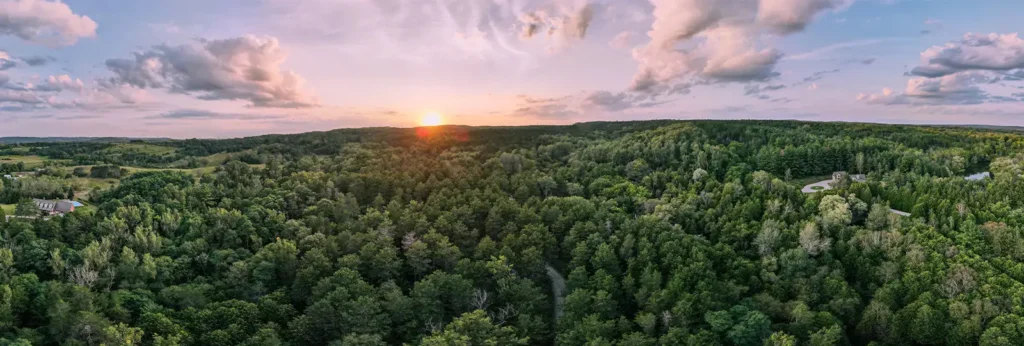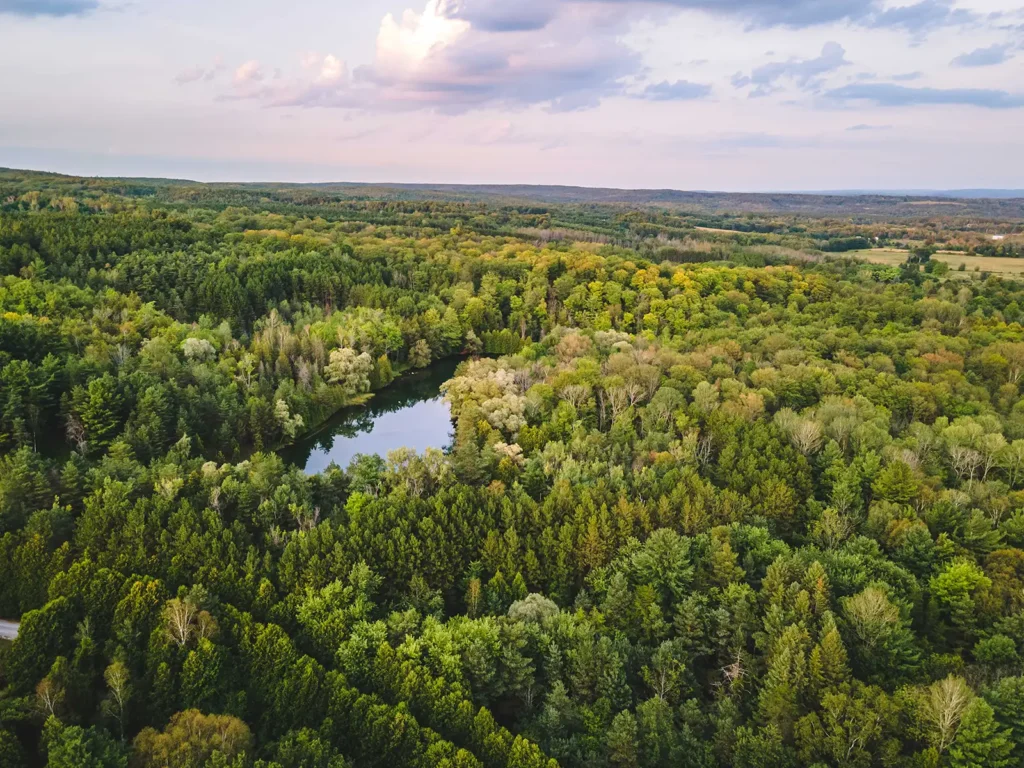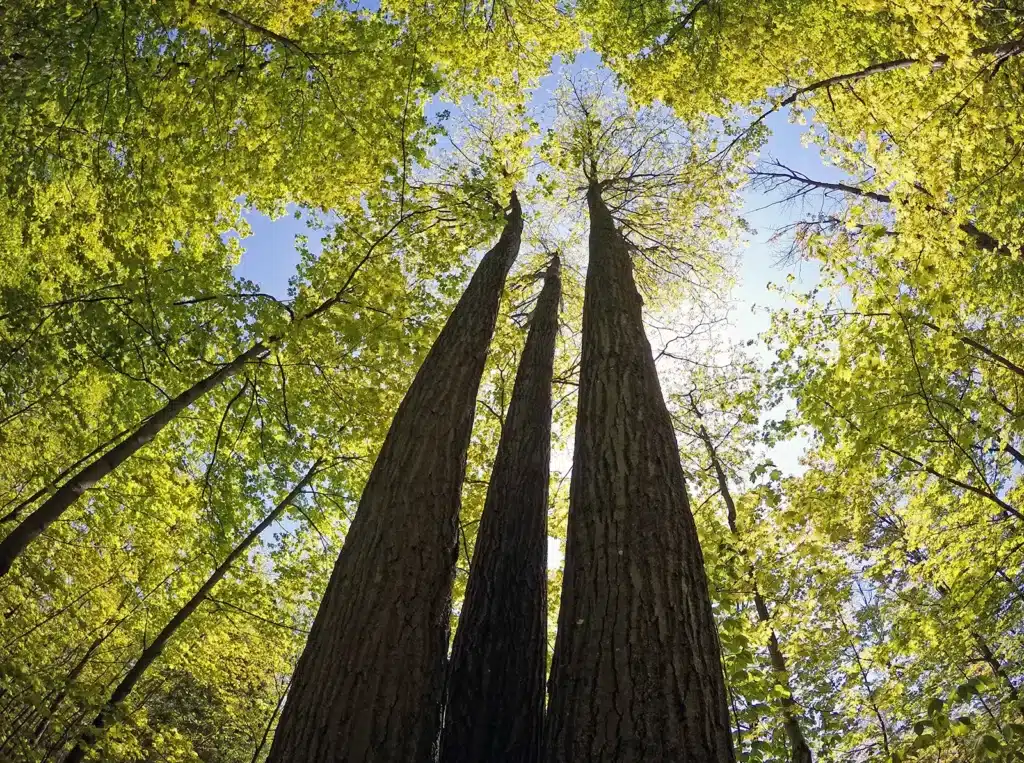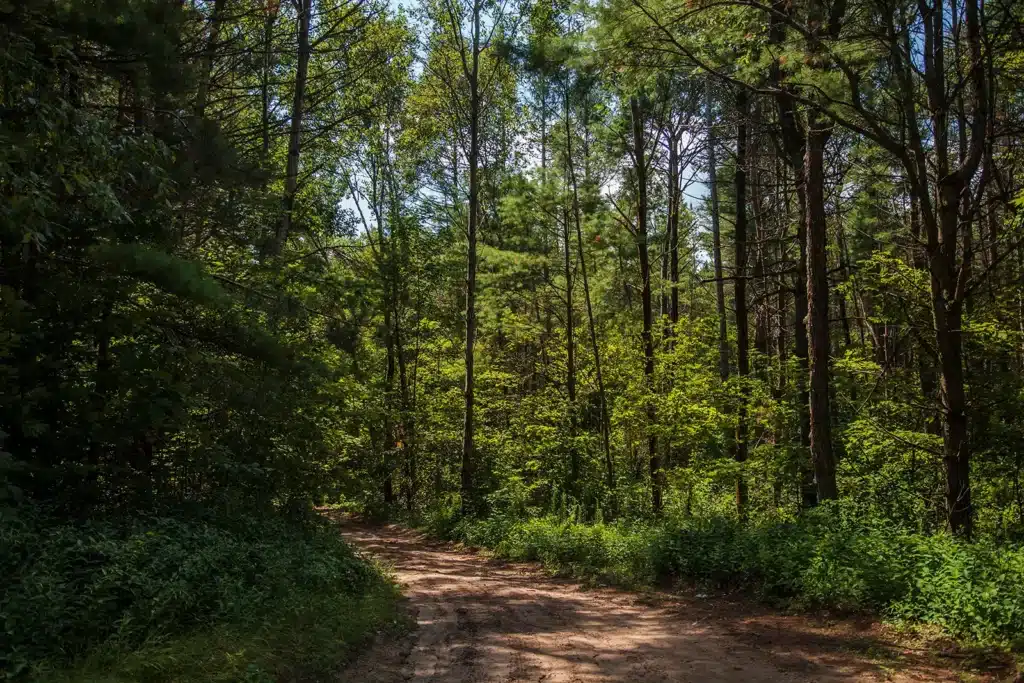Part of the Stories from the Greenbelt series
Our Forests – Continually Giving
Each year, National Forest Week is celebrated by individuals and organizations across Canada. This year’s National Forest Week took place from September 19 – 25, with the goal of raising Canadians’ awareness about the importance of forests with the theme of “Our Forests – Continually Giving.”
Why are Forests important?
Across Canada, and especially in near-urban areas like the Greenbelt, trees and forests provide our communities with a variety of different services. First, forests can help our communities continue to adapt to climate change. Forests can moderate local climates impressively, and past research from the Greenbelt Foundation and Ryerson University found that increased tree cover can mitigate extreme heat and make the air feel up to 11 degrees cooler.
Forests and trees slow water on the landscape to reduce flood risk, and they continue to act as the “lungs of the planet.” Much has been said about forests and their role in creating breathable oxygen, but they can also sequester and store extraordinary levels of carbon within the soil.
Forests provide beautiful, natural areas to participate in recreation activities like hiking or birdwatching, and research has shown that time spent in nature improves mental health and physical well-being. To see some of the most popular forest hiking trails in the Greenbelt, check out our Explore page!
Old-growth Forests in the Greenbelt
Ontario’s Greenbelt protects over two million acres of land. There are over 120,000 hectares of woodlands within the Greenbelt, and that includes some of southern Ontario’s most precious old-growth forests. Old-growth forests have attained a great age without significant disturbance. They are vital and rare ecosystems in southern Ontario that provide important wildlife habitat and ecosystem services to our communities. Research has shown that old-growth forests effectively sequester carbon than newer plantations. It’s estimated that all of Ontario’s Greenbelt stores over 29 million tonnes of carbon – worth approximately $4.65 billion.
There are a few old-growth forests within the Greenbelt that are now protected from land development or logging. For example, Peter’s Woods, on the eastern edge of the Oak Ridges Moraine, is considered one of the finest old-growth forests in southern Ontario. Trees in Peter’s Woods have been aged by biologists, with many of the oak and maple trees are at least 460 years old. Other important remnant old-growth forests are found across the Greenbelt’s geography. And the oldest known tree in Ontario is found in the Greenbelt – an ancient cliff-growing cedar on the Niagara escarpment that is over 1,300 years old. With support from the Greenbelt Foundation, Ancient Forest Exploration and Research has created a map of all the old-growth forests within the Greenbelt; check it out!
The Future of our Forests
Many of our forests across Canada remain under threat from logging activities, invasive species, wildfires, and land development. To combat the continued loss of forests, many organizations and various levels of government have begun programs to replant trees and increase natural tree cover. The federal government has made a commitment to plant 2 billion new trees over the next decade, as well as conserve 25 per cent of Canada’s lands, freshwater, and oceans by 2025, working toward 30 per cent by 2030.
Tree planting initiatives have started to gain more traction, as local Conservation Authorities have begun to host plantings in their watersheds, and organizations like Forests Ontario are developing and facilitating tree planting programs.
From flood control to cleaning the air we breathe to providing critical habitat for wildlife, our forests are continually giving. Let’s give back and find ways to support them.
To learn more about National Forests Week and find out ways to participate, you can see the details at Canadian Institute of Forestry.




